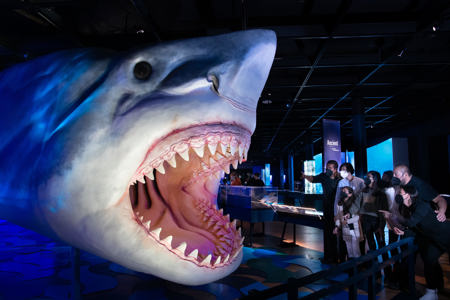

Sharks
American Museum of Natural History
Client: American Museum of Natural History
United States
Using a touchless interactive pattern-matching game, visitors learned how scientists use the spots on whale sharks (like fingerprints) to identify individual fish. Another touchless interactive used motion sensors to allow visitors to “hunt like a hammerhead” using the shark’s sense of electro reception (which allows sharks to detect invisible electromagnetic fields to find food). The exhibit concluded with a third touchless interactive that invited visitors to “be a shark” by standing in front of a video display where they were transformed into various species, as if swimming with the sharks.As a travelling exhibit, Sharks will be reused and recycled by visiting several museums and will be enjoyed by thousands of museum visitors all over the world for many years to come, which means it will have a lower carbon footprint than a one-off temporary exhibit.